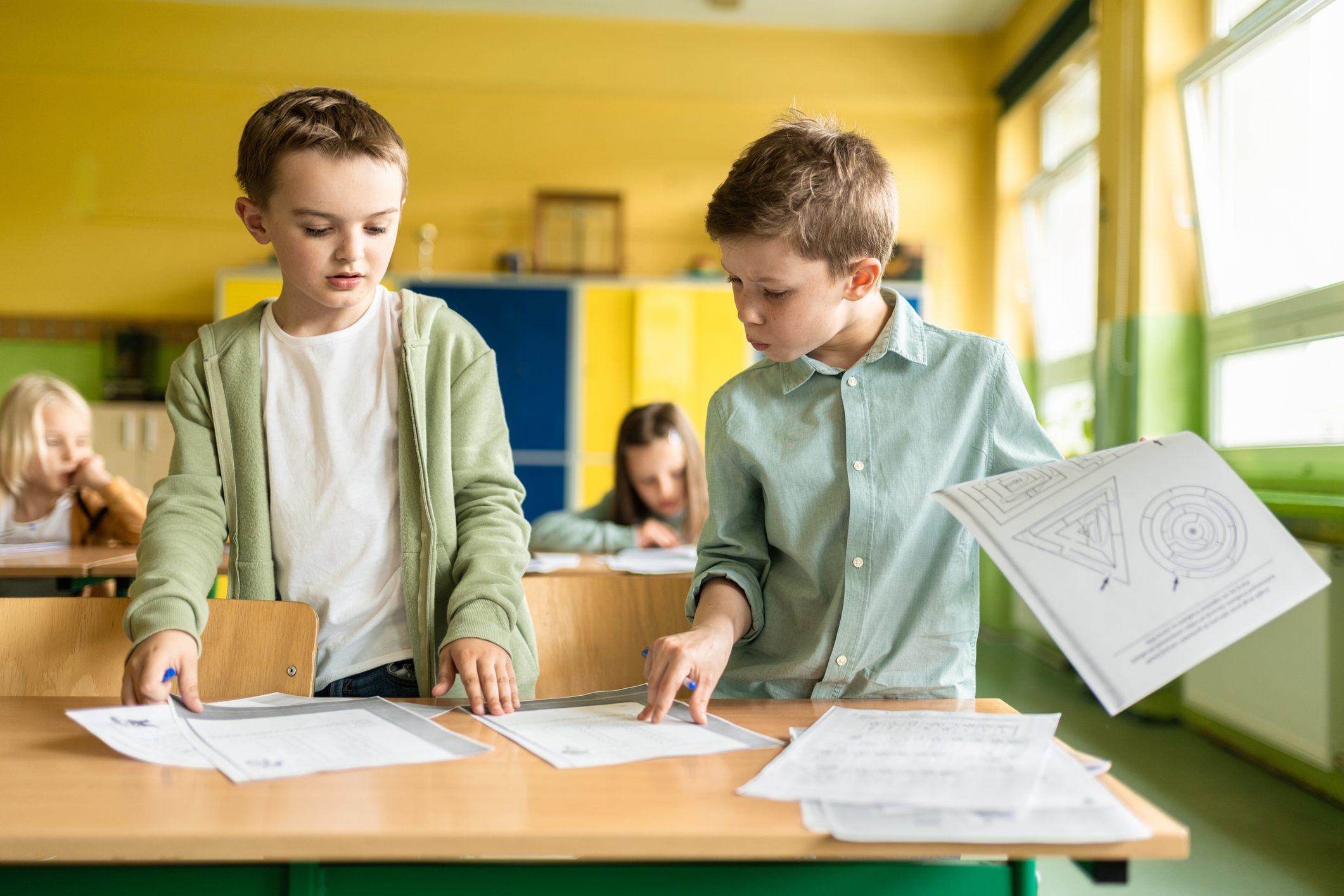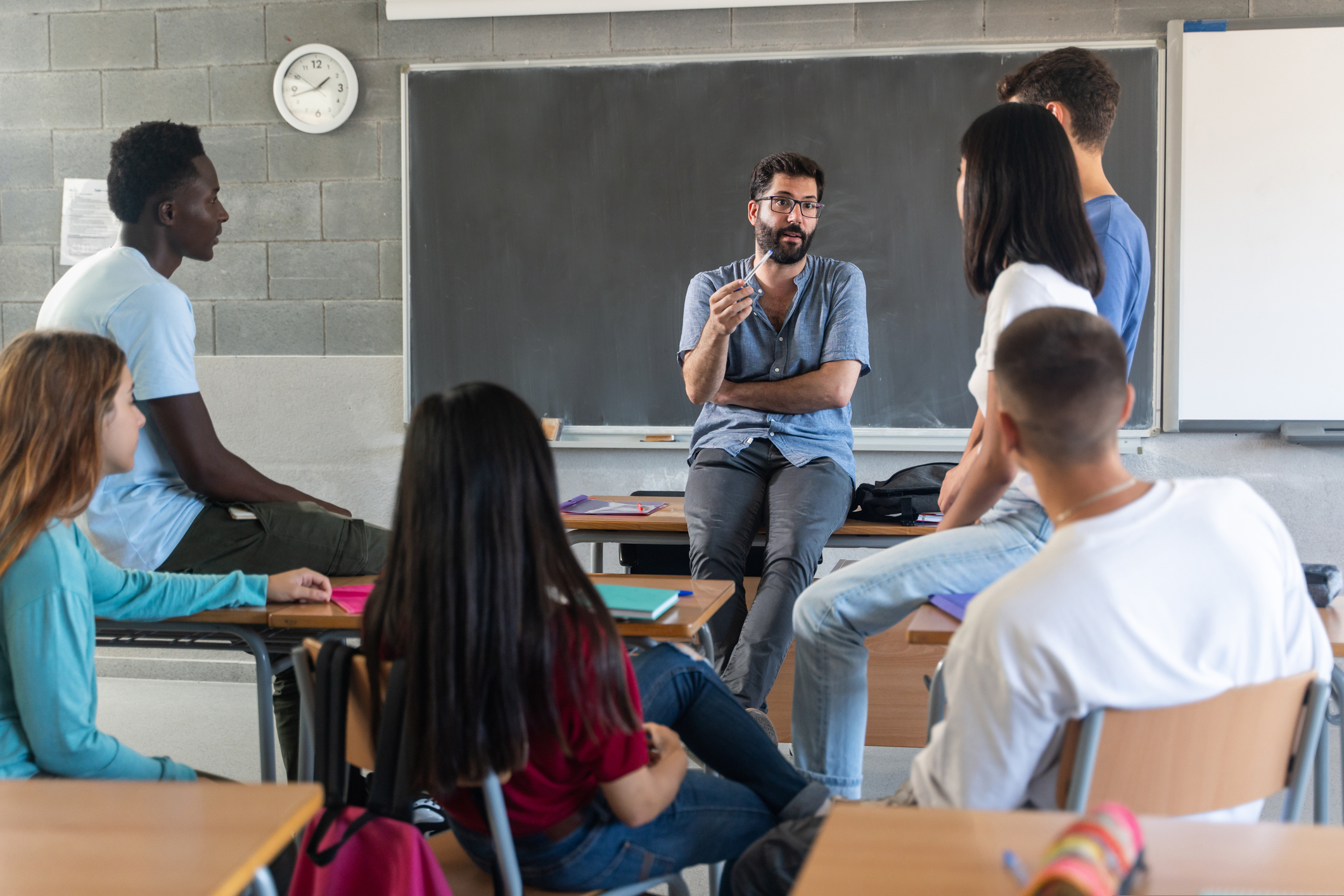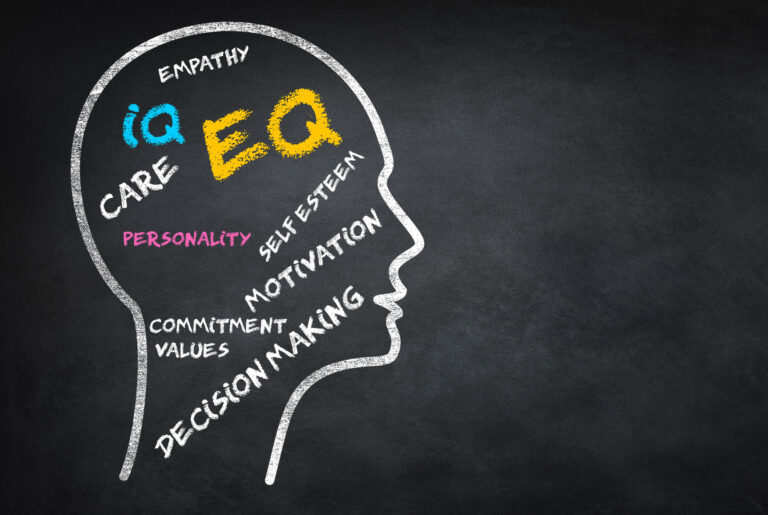Welcome to our blog post on supporting emotional regulation in trauma-informed teaching. As educators, we must understand the impact of trauma on our student’s emotional well-being and provide them with the necessary tools and techniques to regulate their emotions effectively.
Emotional regulation refers to the ability to manage and express emotions healthily and appropriately. For students who have experienced trauma, this skill can be particularly challenging as they may struggle with overwhelming emotions and difficulty in controlling their reactions. Trauma-informed teaching aims to create a safe and supportive environment that acknowledges and addresses the unique needs of these students.
In this blog post, we will explore the importance of emotional regulation in trauma-informed teaching and how it can positively impact students’ learning and social interactions. We will discuss the behavioural and emotional signs of emotional dysregulation, as well as the tools and techniques that can be implemented in the classroom to support students in regulating their emotions effectively.
Some of the strategies we will explore include mindfulness and relaxation techniques, the use of safe spaces, and incorporating social-emotional learning (SEL) curriculum. Additionally, we will delve into specific techniques that can be used to enhance emotional regulation for traumatised students, such as building strong, supportive relationships, teaching self-regulation skills, and creating a predictable and safe classroom environment.
Furthermore, we will emphasise the importance of addressing our emotional regulation as teachers. Teaching can be emotionally demanding, and educators must understand and manage their emotional well-being. We will explore the concept of secondary traumatic stress and provide self-care strategies for teachers. Additionally, we will discuss the significance of seeking support and supervision to ensure our emotional well-being while supporting our students.
By implementing trauma-informed teaching practices and utilizing effective tools and techniques for emotional regulation, we can create a positive and nurturing environment for our students to thrive academically, emotionally, and socially. Join us as we delve into this important topic and equip ourselves with the knowledge and strategies to support our students’ emotional well-being.
Understanding Emotional Regulation and Its Importance in Trauma-Informed Teaching
Emotional regulation is a fundamental aspect of our daily lives, influencing how we interact with others, handle challenges, and navigate our emotions. In the context of trauma-informed teaching, understanding emotional regulation becomes even more critical as it directly impacts the well-being and academic success of students who have experienced trauma.
Emotional regulation refers to the ability to manage and control one’s emotions healthily and appropriately. It involves recognizing and understanding emotions, effectively expressing them, and regulating their intensity and duration. For students who have experienced trauma, emotional regulation can be particularly challenging due to the impact of trauma on their brain development and emotional processing.
In trauma-informed teaching, emotional regulation plays a vital role in creating a safe and supportive learning environment. When students struggle with emotional dysregulation, their ability to focus, learn, and engage with their peers is compromised. By understanding and addressing emotional regulation, educators can help students overcome these challenges and create an environment conducive to their healing and growth.
One of the key reasons why emotional regulation is essential in trauma-informed teaching is its impact on the stress response system. Trauma activates the fight-or-flight response, leading to heightened arousal and emotional reactivity. Without effective emotional regulation, students may experience frequent emotional outbursts, difficulty concentrating, and impaired social interactions. By teaching and supporting emotional regulation, educators can help students develop resilience, self-control, and the ability to cope with stress.
Furthermore, emotional regulation promotes a sense of safety and trust in the classroom. Trauma can significantly impact students’ sense of safety and their ability to trust others. By creating an environment that fosters emotional regulation, educators can help students feel secure and build positive relationships with their peers and teachers.
Moreover, emotional regulation skills are transferable beyond the classroom. Students who are equipped with effective emotional regulation techniques are more likely to navigate challenges in their personal lives, build healthy relationships, and succeed in various aspects of life.
In the following sections of this blog post, we will explore the signs of emotional dysregulation in students who have experienced trauma and discuss the tools and techniques that educators can employ to support their emotional regulation. By gaining a deeper understanding of emotional regulation and its importance in trauma-informed teaching, we can better support our student’s emotional well-being and foster their academic success.
Recognizing Signs of Emotional Dysregulation in Students
Emotional dysregulation refers to difficulties in managing and controlling emotions, resulting in intense and unpredictable emotional responses. Educators must recognise the signs of emotional dysregulation in students, especially those who have experienced trauma, as it can significantly impact their well-being and academic performance.
By being able to identify these signs, educators can respond appropriately and provide the necessary support to help students regulate their emotions effectively. Here are some common behavioural, emotional, and psychological signs that may indicate emotional dysregulation in students:
Behavioural Symptoms of Emotional Dysregulation:
- Aggressive behaviour: Students may exhibit frequent outbursts of anger or aggression towards others, including peers and teachers.
- Impulsivity: Students may have difficulty controlling their impulses, leading to impulsive actions or decisions without considering the consequences.
- Self-destructive behaviour: Students may engage in self-harm or display behaviours that put their safety at risk, such as reckless actions or substance abuse.
- Withdrawal or avoidance: Some students may withdraw from social interactions, isolate themselves, or avoid situations that trigger emotional distress.
- Difficulty with transitions: Students may struggle with transitions between activities or changes in routine, leading to resistance or disruptive behaviour.
Emotional and Psychological Signs:
- Intense emotional reactions: Students may experience intense and prolonged emotional reactions, such as anger, fear, sadness, or anxiety, that are disproportionate to the situation.
- Mood swings: Students may exhibit frequent and unpredictable shifts in their mood, going from calm to extremely agitated or from happy to deeply sad.
- Hypervigilance: Students may display heightened alertness and sensitivity to their surroundings, constantly scanning for potential threats.
- Emotional numbing: Some students may exhibit a flat affect or appear emotionally detached, as a way to protect themselves from overwhelming emotions.
The Impact on Learning and Social Interaction:
- Academic difficulties: Emotional dysregulation can impair students’ ability to concentrate, focus, and engage in learning activities, resulting in academic underachievement.
- Impaired social skills: Students may struggle with building and maintaining positive relationships with peers and teachers due to difficulties in regulating their emotions during social interactions.
- Low self-esteem: Emotional dysregulation can contribute to a negative self-perception and a lack of confidence, impacting students’ overall well-being and sense of self-worth.
Recognizing these signs of emotional dysregulation allows educators to respond with empathy and support, creating a trauma-informed environment that promotes emotional regulation. In the next section, we will explore various tools and techniques that can be employed to support students in regulating their emotions effectively.
Tools for Supporting Emotional Regulation in the Classroom
Creating a supportive and nurturing classroom environment is essential for promoting emotional regulation in students who have experienced trauma. In this section, we will explore various tools and techniques that educators can utilise to support emotional regulation in the classroom setting.
Mindfulness and Relaxation Techniques:
- Mindful breathing exercises: Teach students simple breathing techniques, such as deep belly breathing or counting breaths, to help them regulate their emotions and promote a sense of calm.
- Guided imagery: Use guided imagery exercises to help students visualize peaceful and relaxing scenes, allowing them to escape from stressful situations and promote emotional regulation.
- Progressive muscle relaxation: Guide students through a process of tensing and relaxing different muscle groups, helping them to release tension and promote relaxation.
- Mindful movement activities: Incorporate gentle physical activities like yoga or stretching into the daily routine to encourage students to connect with their bodies and regulate their emotions through movement.
Use of Safe Spaces:
- Designated calm-down areas: Create a dedicated area in the classroom where students can go to calm themselves when feeling overwhelmed. This space should be quiet, comfortable, and equipped with sensory tools like fidget toys or stress balls.
- Visual cues: Use visual cues, such as a “calm down” or “take a break” card, that students can use to indicate when they need a moment to regulate their emotions. This allows for self-advocacy and gives students a sense of control over their emotions.
- Sensory supports: Provide sensory supports like weighted blankets, noise-cancelling headphones, or stress-relief toys to help students regulate their sensory input and promote emotional well-being.
Incorporating Social Emotional Learning (SEL) Curriculum:
- Emotion identification and expression: Integrate lessons that teach students to identify and express their emotions in healthy ways. This can include activities like journaling, role-playing, or discussing real-life scenarios.
- Conflict resolution skills: Teach students effective strategies for resolving conflicts and managing disagreements constructively. Provide opportunities for students to practice these skills through role-plays or restorative circles.
- Self-awareness and self-reflection: Foster self-awareness by encouraging students to reflect on their emotions, triggers, and coping mechanisms. This can be done through journaling exercises or class discussions.
- Empathy-building activities: Engage students in activities that promote empathy and understanding of others’ emotions and experiences. This can include storytelling, community service projects, or collaborative group activities.
By incorporating these tools and techniques into the classroom, educators can create an environment that supports emotional regulation and provides students with the necessary skills to navigate their emotions effectively. In the next section, we will explore specific techniques that can be employed to enhance emotional regulation for traumatized students.
Techniques to Enhance Emotional Regulation for Traumatised Students
Enhancing emotional regulation for traumatised students requires specific techniques that address their unique needs and experiences. In this section, we will explore several techniques that educators can employ to support traumatised students in developing effective emotional regulation skills.
Building Strong, Supportive Relationships:
- Establishing trust: Build a safe and trusting relationship with each student by showing empathy, actively listening, and validating their experiences. This foundation of trust is crucial for students to feel comfortable expressing their emotions and seeking support.
- Individualized support: Recognise that each student’s trauma experience is unique, and their emotional regulation needs may vary. Provide individualized support and interventions based on their specific needs, strengths, and triggers.
- Regular check-ins: Schedule regular one-on-one check-ins with students to provide a safe space for them to share their emotions, concerns, and progress. This allows for ongoing support and helps identify any areas where additional assistance may be needed.
Teaching Self-Regulation Skills:
- Emotion identification and awareness: Help students identify and label their emotions by providing them with a vocabulary to express their feelings. This can be done through discussions, emotion charts, or journaling exercises.
- Coping strategies: Teach students a range of coping strategies that they can utilize when they feel overwhelmed or dysregulated. These strategies may include deep breathing exercises, positive self-talk, engaging in a favourite activity, or seeking support from a trusted adult.
- Problem-solving skills: Guide students in developing problem-solving skills to navigate challenging situations. Encourage them to identify the problem, brainstorm possible solutions, evaluate the pros and cons, and make informed decisions.
- Emotional regulation tools: Introduce students to various tools and techniques that can help regulate their emotions, such as using a feelings journal, practising grounding exercises, or engaging in sensory-based activities like squeezing a stress ball or using calming scents.
Creating a Predictable, Safe Classroom Environment:
- Consistent routines and expectations: Establish consistent daily routines and communicate expectations to provide a sense of stability and predictability for students. This helps them feel secure, reduces anxiety, and promotes emotional regulation.
- Visual schedules: Use visual schedules and cues to provide students with a visual representation of the daily routine. This supports their understanding of transitions and reduces uncertainty, allowing for smoother emotional regulation.
- Clear boundaries and rules: Set clear boundaries and rules in the classroom to create a structured environment that promotes emotional safety. Ensure that students understand the consequences of their actions and feel secure in the knowledge that appropriate behaviour will be consistently reinforced.
- Trauma-informed practices: Implement trauma-informed practices, such as avoiding triggers, providing warnings before unexpected changes, and using trauma-sensitive language. These practices help create an environment that is sensitive to students’ trauma experiences and supports their emotional well-being.
By implementing these techniques, educators can help traumatized students develop the necessary skills and strategies to regulate their emotions effectively. In the next section, we will shift the focus to the importance of addressing our emotional regulation as teachers.
Addressing Your Emotional Regulation as a Teacher
Addressing our emotional regulation as teachers is crucial for maintaining our well-being and effectively supporting our students. Teaching can be emotionally demanding, and educators need to prioritise their emotional health. In this section, we will explore the importance of addressing our emotional regulation and provide strategies for self-care.
Understanding Secondary Traumatic Stress:
- Recognizing the impact: Secondary traumatic stress refers to the emotional and psychological distress that can occur when individuals are exposed to the trauma experiences of others, such as our students. Understand that working with traumatized students can have an impact on our own well-being and emotional regulation.
- Identifying signs and symptoms: Be aware of the signs and symptoms of secondary traumatic stress, which may include feelings of helplessness, emotional exhaustion, irritability, difficulty sleeping, and intrusive thoughts. Recognizing these signs allows us to take proactive steps to address our emotional needs.
Self-Care Strategies for Teachers:
- Establishing self-care routines: Create regular self-care routines that prioritize activities that bring you joy, relaxation, and rejuvenation. This may include hobbies, exercise, mindfulness practices, spending time in nature, or engaging in creative outlets.
- Setting boundaries: Establish clear boundaries between work and personal life to ensure that you have designated time for self-care and relaxation. Avoid excessive work hours and prioritize activities that promote your well-being.
- Seeking support: Reach out to colleagues, mentors, or support groups to share experiences and seek guidance. Surround yourself with a network of individuals who can provide emotional support and understanding.
- Practising mindfulness and stress reduction techniques: Engage in mindfulness exercises, such as meditation or deep breathing, to reduce stress and enhance emotional regulation. Incorporate stress reduction techniques into your daily routine to promote overall well-being.
Seeking Support and Supervision:
- Professional development and training: Attend professional development workshops or training sessions focused on trauma-informed teaching and self-care. Continually seek opportunities to enhance your knowledge and skills in supporting both your students and yourself.
- Supervision and debriefing: Engage in regular supervision or debriefing sessions with a trusted supervisor or colleague. This provides a space to process challenging situations, seek guidance, and reflect on your emotional well-being.
- Accessing counselling or therapy: If needed, consider seeking professional counselling or therapy to address your own emotional needs and gain valuable support in managing the emotional demands of your work.
By addressing our emotional regulation and practising self-care, we can better support our students and create a positive and nurturing classroom environment. Remember, taking care of ourselves is not selfish; it is essential for our well-being and our ability to be effective educators.
Related posts:
 Why Points Systems in Schools Might Not Work, or Worse, May Even Be Damaging
Why Points Systems in Schools Might Not Work, or Worse, May Even Be Damaging
 Empowering Students’ Voices: Promoting Agency and Resilience in Trauma-Informed Classrooms
Empowering Students’ Voices: Promoting Agency and Resilience in Trauma-Informed Classrooms
 Promoting Self-Care for Teachers: Supporting Wellbeing in Trauma-Informed Classrooms
Promoting Self-Care for Teachers: Supporting Wellbeing in Trauma-Informed Classrooms
 A Teacher’s Guide to Trauma-Informed Classrooms
A Teacher’s Guide to Trauma-Informed Classrooms



